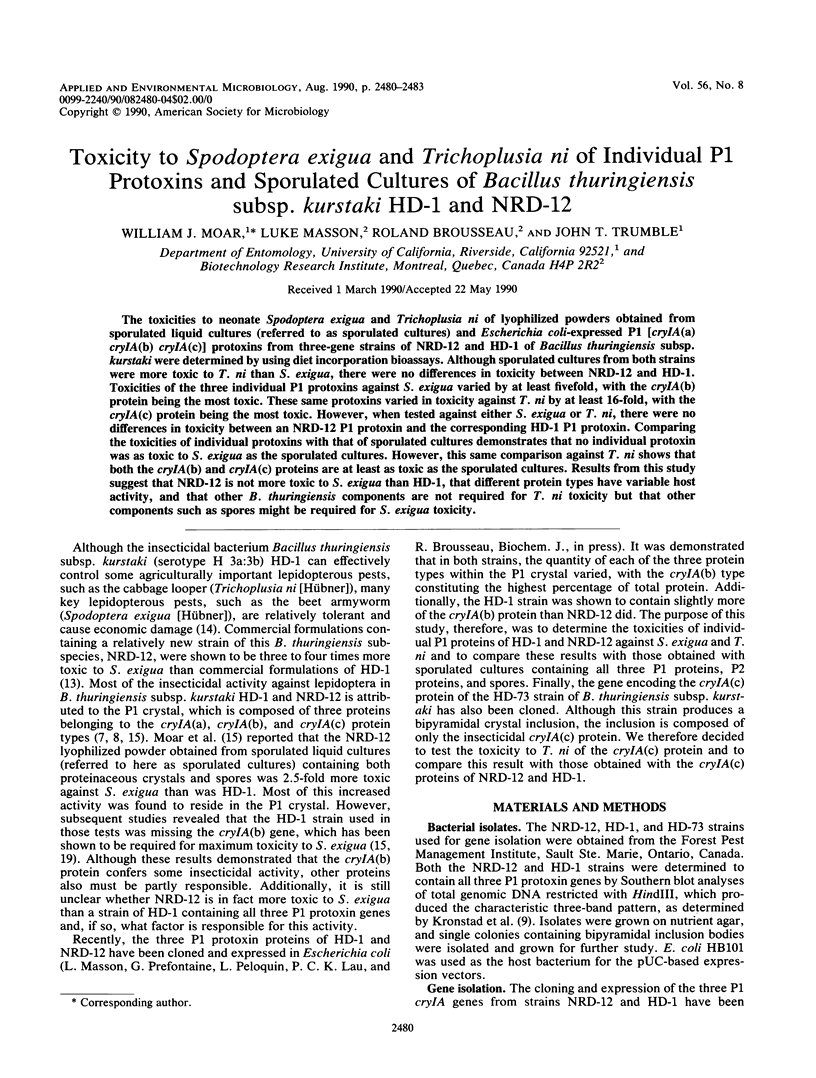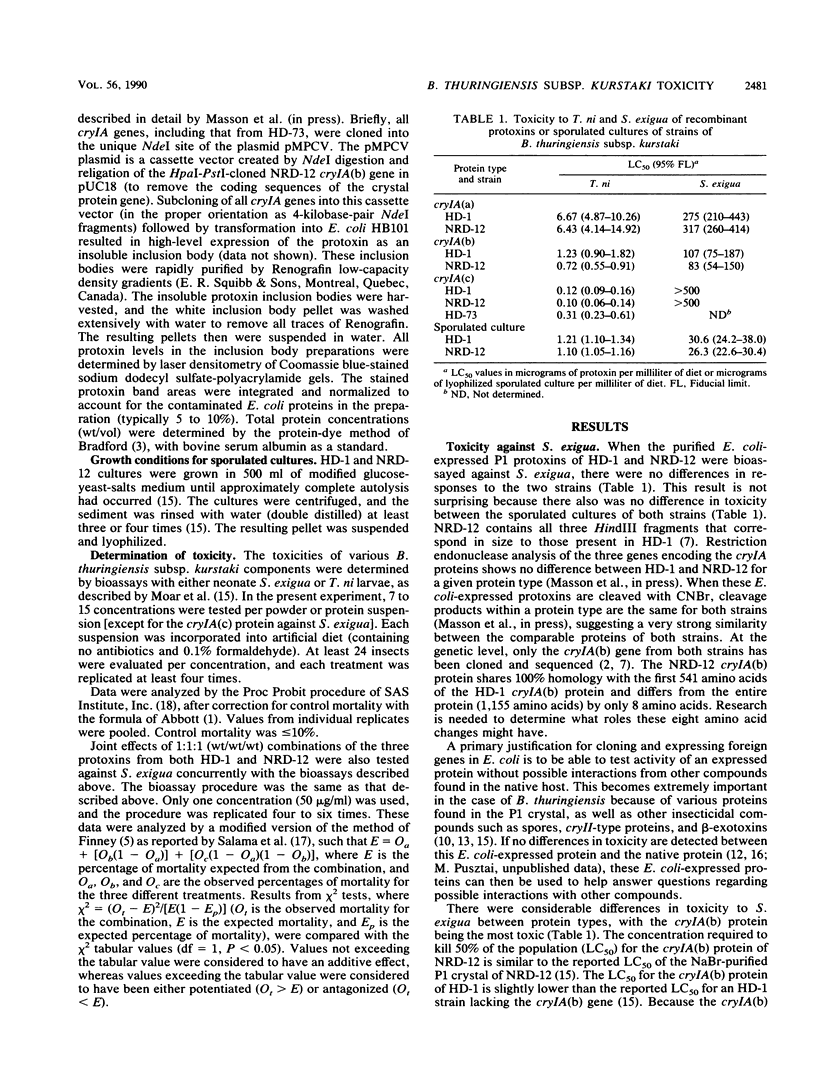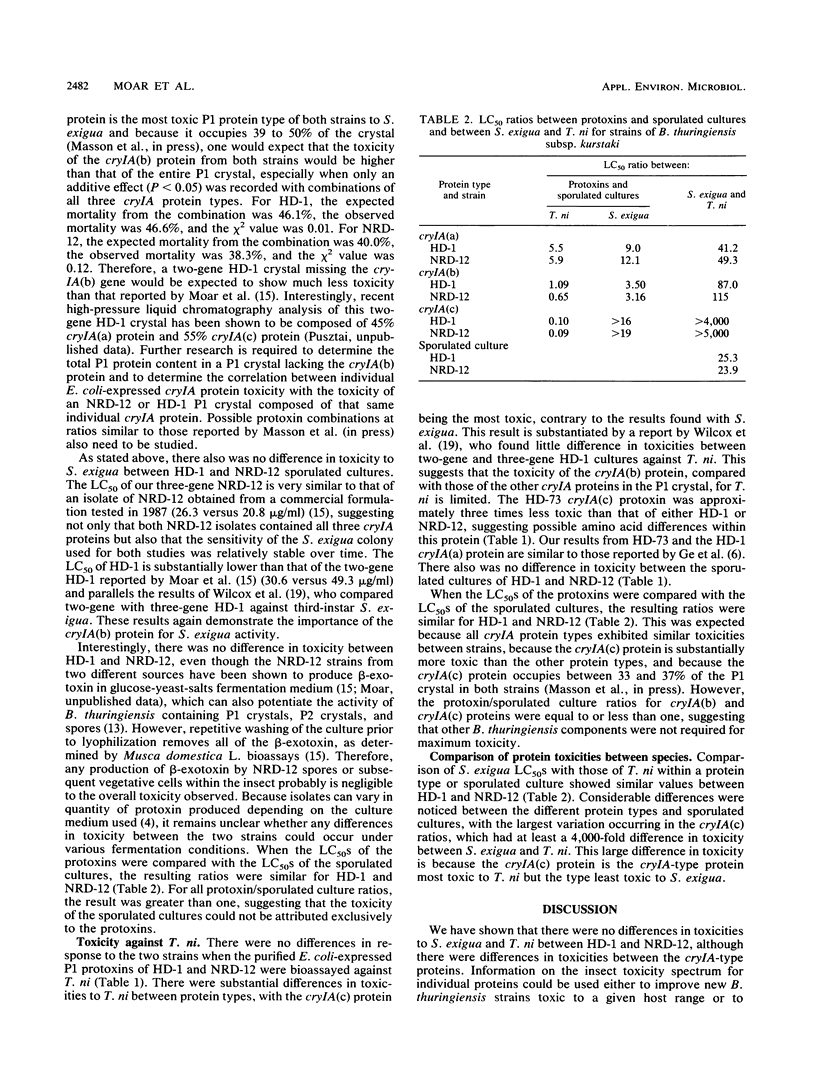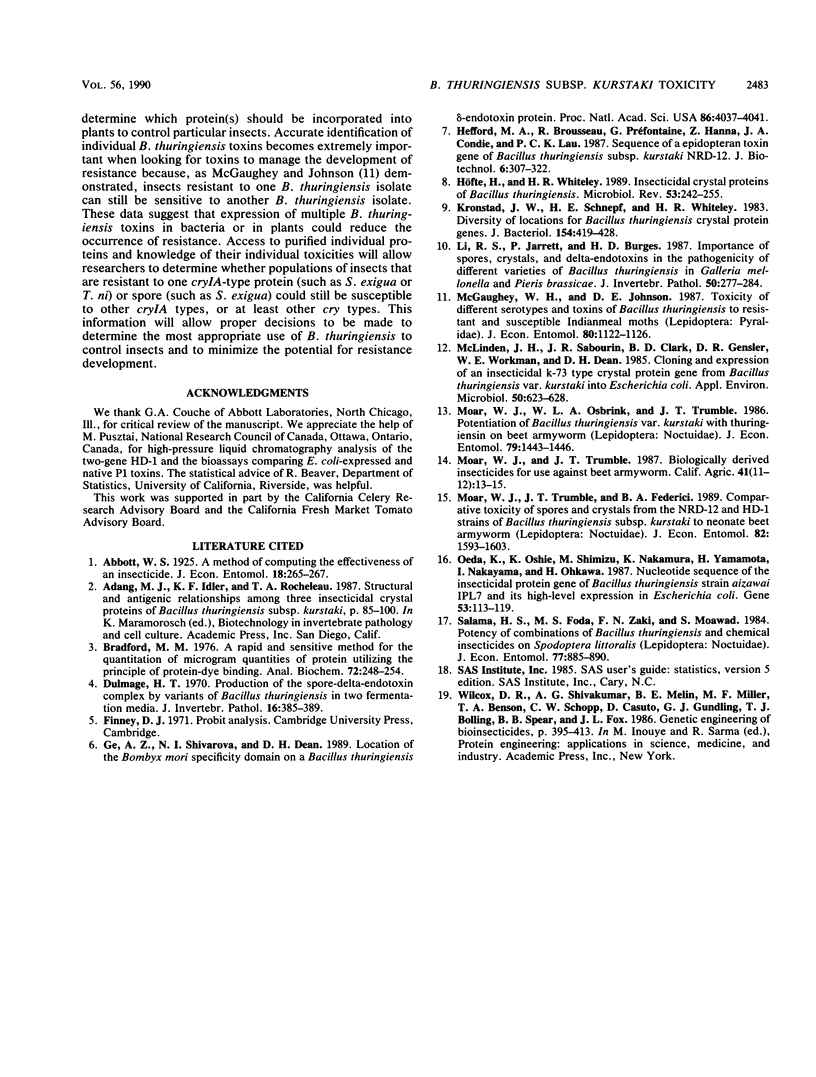Abstract
The toxicities to neonate Spodoptera exigua and Trichoplusia ni of lyophilized powders obtained from sporulated liquid cultures (referred to as sporulated cultures) and Escherichia coli-expressed P1 [cryIA(a) cryIA(b) cryIA(c)] protoxins from three-gene strains of NRD-12 and HD-1 of Bacillus thuringiensis subsp. kurstaki were determined by using diet incorporation bioassays. Although sporulated cultures from both strains were more toxic to T. ni than S. exigua, there were no differences in toxicity between NRD-12 and HD-1. Toxicities of the three individual P1 protoxins against S. exigua varied by at least fivefold, with the cryIA(b) protein being the most toxic. These same protoxins varied in toxicity against T. ni by at least 16-fold, with the cryIA(c) protein being the most toxic. However, when tested against either S. exigua or T. ni, there were no differences in toxicity between an NRD-12 P1 protoxin and the corresponding HD-1 P1 protoxin. Comparing the toxicities of individual protoxins with that of sporulated cultures demonstrates that no individual protoxin was as toxic to S. exigua as the sporulated cultures. However, this same comparison against T. ni shows that both the cryIA(b) and cryIA(c) proteins are at least as toxic as the sporulated cultures. Results from this study suggest that NRD-12 is not more toxic to S. exigua than HD-1, that different protein types have variable host activity, and that other B. thuringiensis components are not required for T. ni toxicity but that other components such as spores might be required for S. exigua toxicity.
Full text
PDF



Selected References
These references are in PubMed. This may not be the complete list of references from this article.
- Bradford M. M. A rapid and sensitive method for the quantitation of microgram quantities of protein utilizing the principle of protein-dye binding. Anal Biochem. 1976 May 7;72:248–254. doi: 10.1006/abio.1976.9999. [DOI] [PubMed] [Google Scholar]
- Dulmage H. T. Production of the spore-delta-endotoxin complex by variants of bacillus thuringiensis in two fermentation media. J Invertebr Pathol. 1970 Nov;16(3):385–389. doi: 10.1016/0022-2011(70)90157-6. [DOI] [PubMed] [Google Scholar]
- Ge A. Z., Shivarova N. I., Dean D. H. Location of the Bombyx mori specificity domain on a Bacillus thuringiensis delta-endotoxin protein. Proc Natl Acad Sci U S A. 1989 Jun;86(11):4037–4041. doi: 10.1073/pnas.86.11.4037. [DOI] [PMC free article] [PubMed] [Google Scholar]
- Höfte H., Whiteley H. R. Insecticidal crystal proteins of Bacillus thuringiensis. Microbiol Rev. 1989 Jun;53(2):242–255. doi: 10.1128/mr.53.2.242-255.1989. [DOI] [PMC free article] [PubMed] [Google Scholar]
- Kronstad J. W., Schnepf H. E., Whiteley H. R. Diversity of locations for Bacillus thuringiensis crystal protein genes. J Bacteriol. 1983 Apr;154(1):419–428. doi: 10.1128/jb.154.1.419-428.1983. [DOI] [PMC free article] [PubMed] [Google Scholar]
- McLinden J. H., Sabourin J. R., Clark B. D., Gensler D. R., Workman W. E., Dean D. H. Cloning and Expression of an Insecticidal k-73 Type Crystal Protein Gene from Bacillus thuringiensis var. kurstaki into Escherichia coli. Appl Environ Microbiol. 1985 Sep;50(3):623–628. doi: 10.1128/aem.50.3.623-628.1985. [DOI] [PMC free article] [PubMed] [Google Scholar]
- Oeda K., Oshie K., Shimizu M., Nakamura K., Yamamoto H., Nakayama I., Ohkawa H. Nucleotide sequence of the insecticidal protein gene of Bacillus thuringiensis strain aizawai IPL7 and its high-level expression in Escherichia coli. Gene. 1987;53(1):113–119. doi: 10.1016/0378-1119(87)90098-9. [DOI] [PubMed] [Google Scholar]


